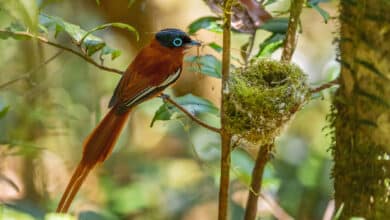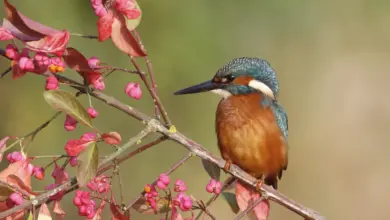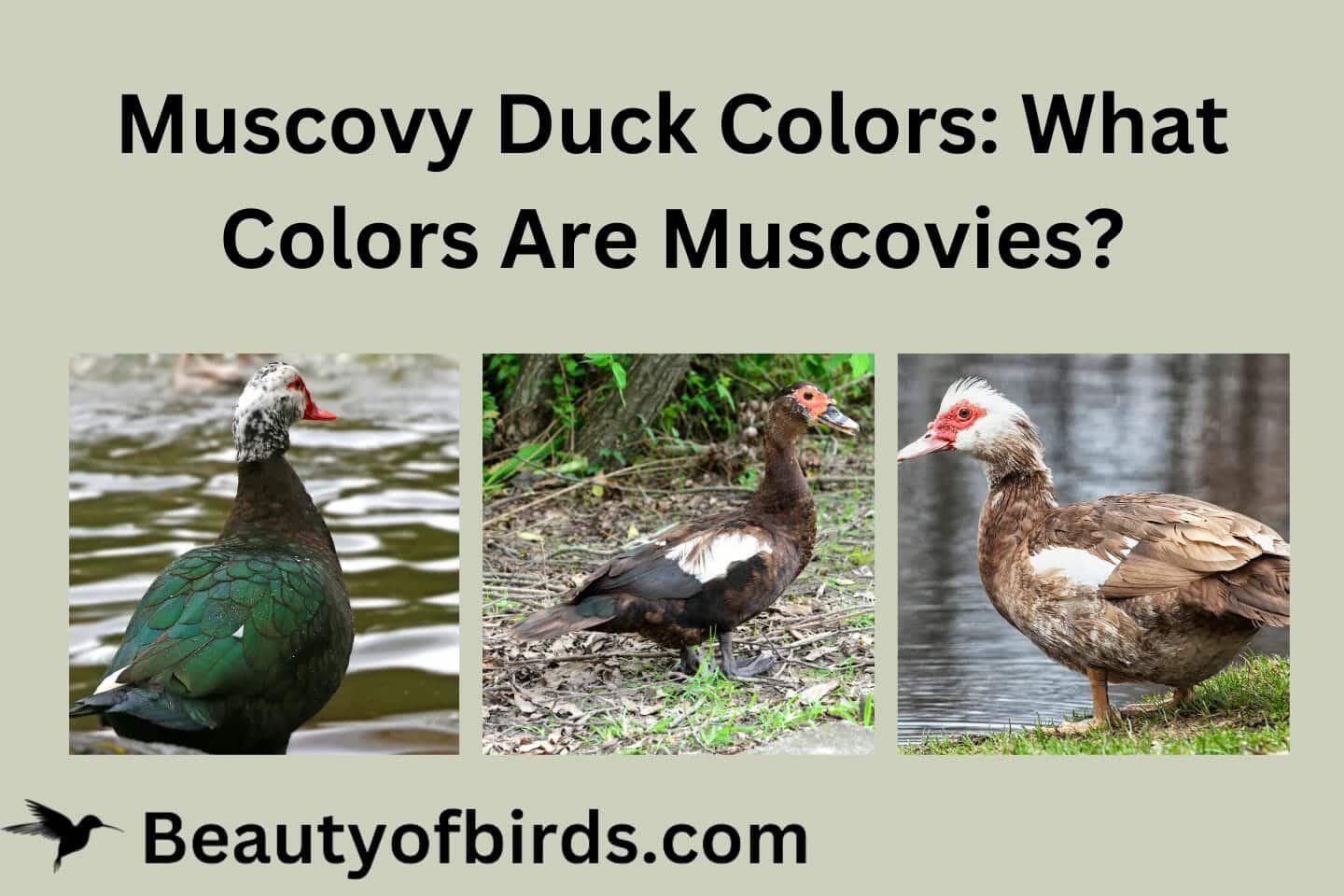The Tufted Ducks (Aythya fuligula) is a medium-sized diving duck with a population of close to one million birds.
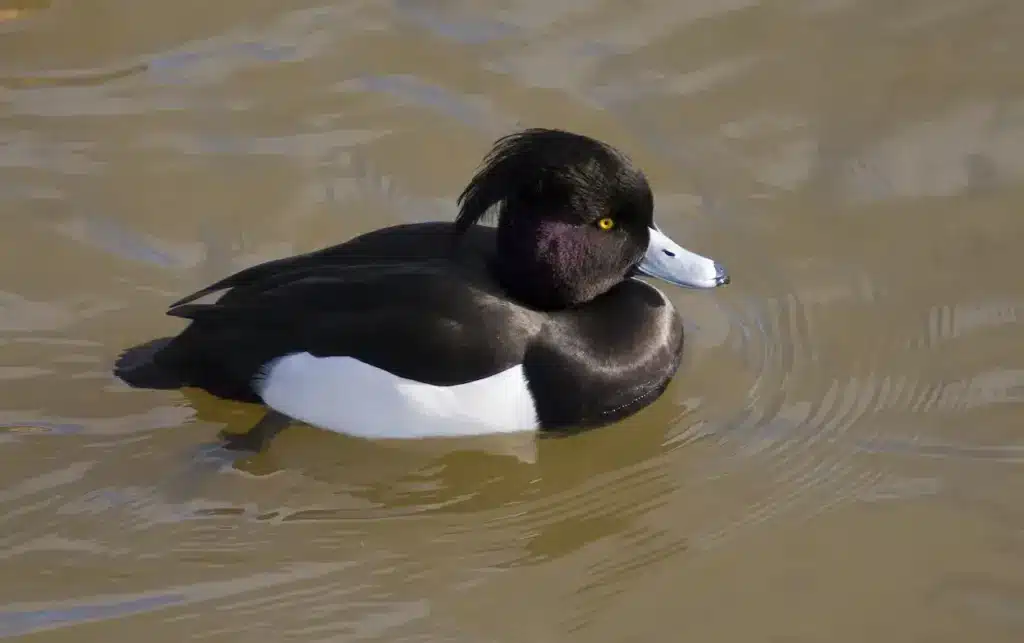
Description
The adult male is all black except for white flanks and a blue-grey bill. It has an obvious head tuft that gives the species its name.
The adult female is brown with paler flanks and is more easily confused with other diving ducks. In particular, some have white around the bill base which resembles the scaup species, although the white is never as extensive as in those ducks.
The only duck that is at all similar is the Drake North American Ring-necked Duck, which however has a different head shape, no tuft and greyish flanks.
Distribution
The Tufted Duck breeds widely throughout temperate and northern Eurasia. It occasionally can be found as a winter visitor along both coasts of the United States and Canada.
It is believed to have expanded its traditional range with the increased availability of open water due to gravel extraction, and the spread of freshwater mussels, a favourite food.
These ducks are migratory in most of their range, and winter in the milder south and west of Europe, southern Asia and all year in most of the United Kingdom.
They will form large flocks on open water in winter.
Habitat
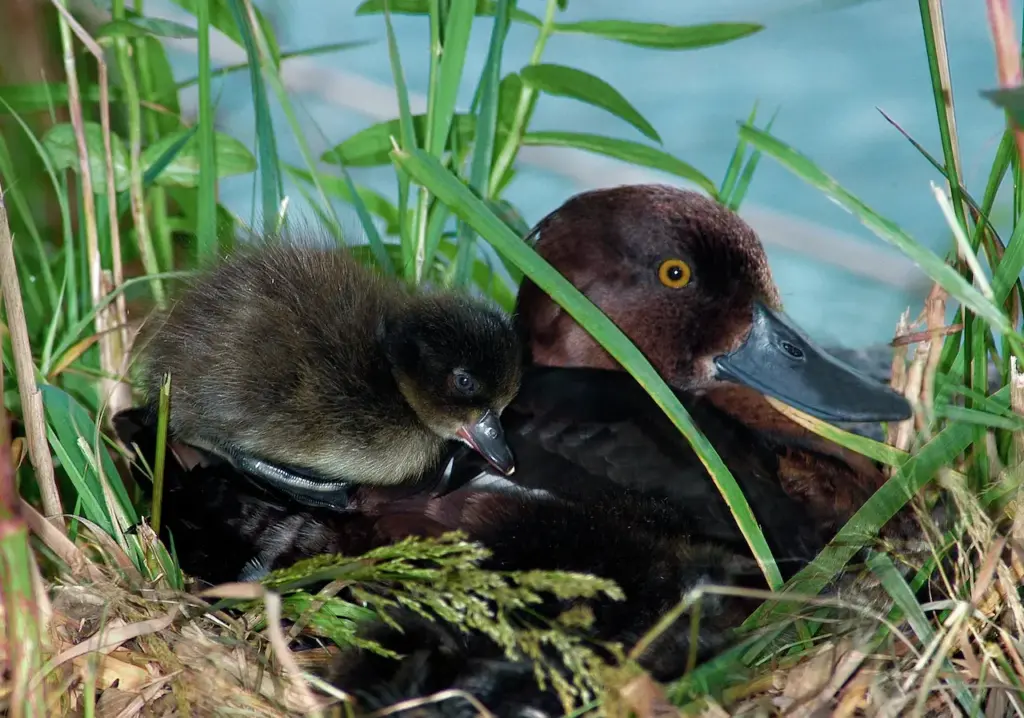
Their breeding habitat is close to marshes and lakes with plenty of vegetation to conceal the nest. They are also found in coastal lagoons, the seashore, and sheltered ponds.
Food
These birds feed mainly by diving, but they will dabble. They eat molluscs, aquatic insects and some plants and sometimes feed at night.
Status
The Tufted Duck is one of the species to which the Agreement on the Conservation of African-Eurasian Migratory Waterbirds (AEWA) applies.
References
- BirdLife International (2004). Aythya fuligula. 2006. IUCN Red List of Threatened Species. IUCN 2006. Retrieved on 11 May 2006. Database entry includes justification for why this species is of least concern
Diet / Feeding:
Ducks generally feed on larvae and pupae usually found under rocks, aquatic animals, plant material, seeds, small fish, snails and crabs.
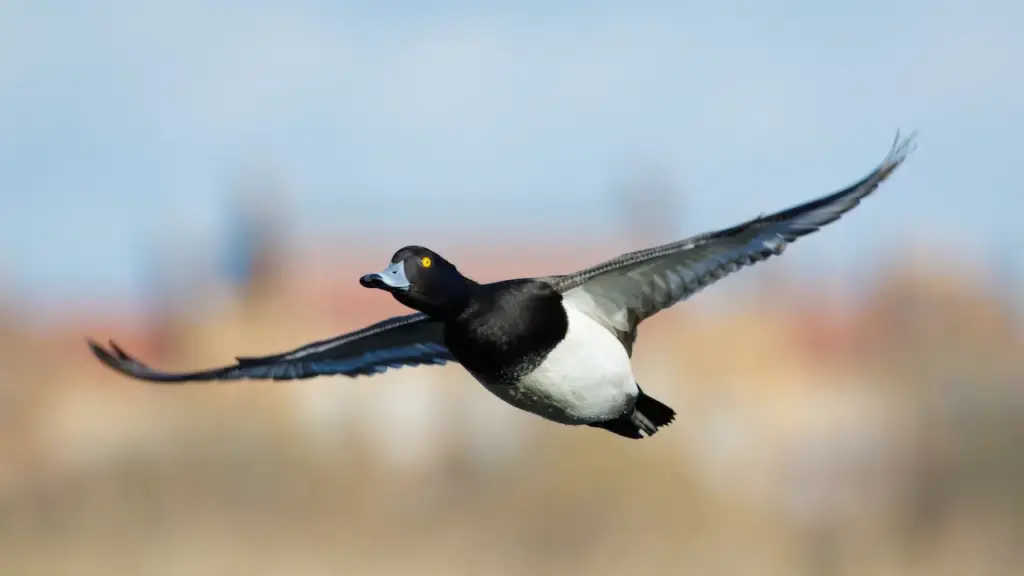
Feeding Ducks …
We all enjoy ducks and many of us offer them food to encourage them to come over and stay around – and it works! Who doesn’t like an easy meal!
However, the foods that we traditionally feed them at local ponds are utterly unsuitable for them and are likely to cause health problems down the road. Also, there may be local laws against feeding this species of bird – so it’s best to check on that rather than facing consequences at a later stage.
- Foods that can be fed to Ducks, Geese and Swans to survive cold winters and remain healthy when food is scarce in their environment.
Please note that feeding ducks and geese makes them dependent on humans for food, which can result in starvation and possibly death when those feedings stop. If you decide to feed them, please limit the quantity to make sure that they maintain their natural ability to forage for food themselves – providing, of course, that natural food sources are available.

